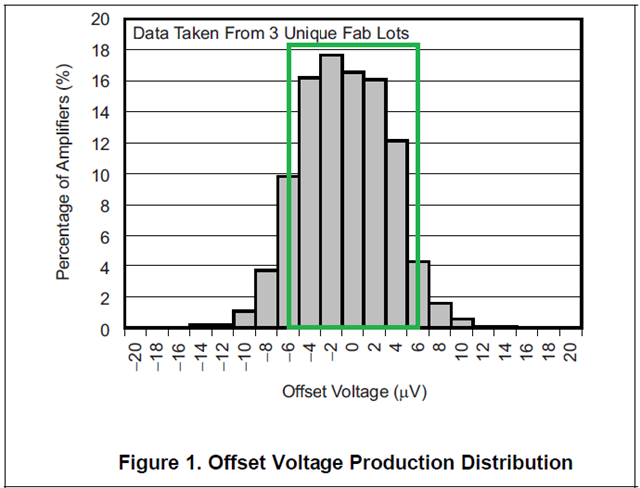Other Parts Discussed in Thread: OPA188, OPA837, OPA690
Hello,
I have some questions about Ibias specification. From datasheet the typical value is 80ns and maximum 500 nA.
I suppose Ib+ and Ib-- currents flow only in one direction (entering into OpAmP) for LM741 , since the are only two input bipolar transistor. So:
1)Can I consider datasheet typical value as the mean value of Ibias (defined as the mean of the two currents flowing into OpAmp) over a certain population of OpAmp?
2)Can I consider datasheet maximum value as the value that is 6-sigma beyond the typical one?
Moreover I know there are ICs (with ESD protection or Ib cancelation circuit) having Ib+ and Ib- that flow in both directions (OPA188). I suppose that now we have a zero mean for both Ib+ and Ib- and for Ibias itself.
3)Can I consider datasheet typical value as one-sigma over a certain population of OpAmp?
4)Can I consider datasheet maximum value as the 6-sigma?
In other words, I thought that typical value reported in datasheet represents the mean (if mean different from zero) or standard deviation (if mean equal to zero), is this rule correct?
Thanks,
Massimo


